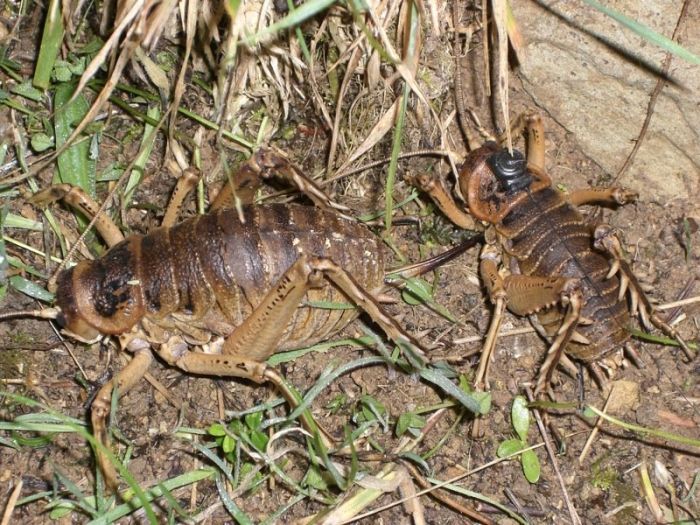|
|
Giant Weta
|
The 60 species of cave weta have extra-long antennae, and may have long, slender legs and a passive demeanour. Although they have no hearing organs on their front legs like species of Hemideina and Deinacrida some (e.g., Talitropsis spp.) are very sensitive to ground vibrations sensed through pads on their feet. Specialised hairs on the cerci and organs on the antennae are also sensitive to low frequency vibrations in the air. Cave weta may be active within the confines of their caves during the daytime, and those individuals close to cave entrances venture outside at night. But most species are forest dwellers and a few are to be found in the high alpine screes living among the broken rock that are covered with snow up to six months of the year. New Zealand species are classified in several genera in subfamily Macropathinae of family Rhaphidophoridae, and are very distant cousins of the other types of weta.
Conservation
Although the weta had native predators in the form of birds (especially the weka and kiwi), reptiles and bats before the arrival of humans, introduced species such as cats, hedgehogs, rats (including kiore) and mustelids have caused a sharp increase in the rate of predation. They are also vulnerable to habitat destruction caused by humans and modification of their habitat caused by introduced browsers. New Zealand’s Department of Conservation considers that 16 of the 70 species of weta are now at risk. Programmes to prevent extinctions have been implemented since the 1970s.
|
|









